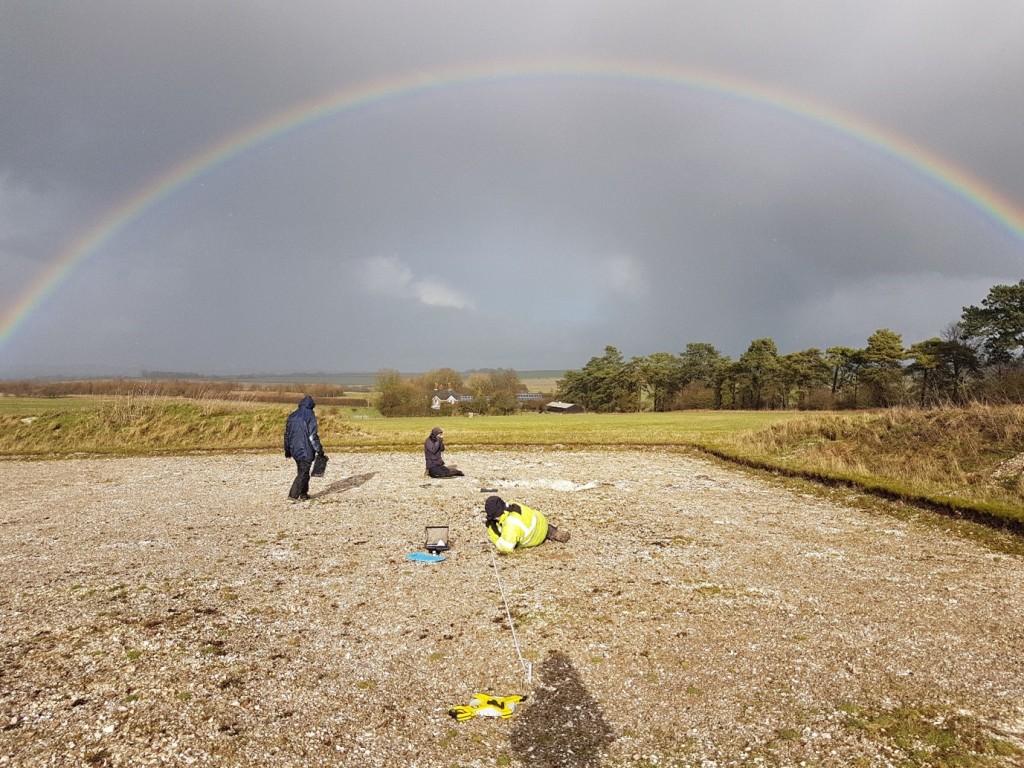Lucy Ridding discusses the background, work and findings on her recent research for Do plant traits influence primary succession patterns for bryophytes and vascular plants? Evidence from a 33-year chronosequence on bare chalk with fellow ecologists Peter Hawes, Robin Walls, Sharon L. Pilkington, Richard F. Pywell and Oliver L. Pescott.

Background
We’ve been researching succession (the process in which biological communities change over time) for a long time in ecology. This knowledge is important for so many modern applications including our understanding of biodiversity loss and restoration.
Plant traits represent important aspects of species’ morphologies and life histories and can be useful indicators for understanding succession. In plants, succession often begins with colonisation from ruderals, which typically have high colonising abilities but low competitive abilities. As succession progresses, the environmental conditions and resources influencing the development and survival of plants change, and ruderals are replaced by competitors.
We wanted to understand how species abundance changes through succession, and how this relates to species’ colonising and competitive abilities, using relevant plant traits. We tested this for two different taxa groups, vascular plants and bryophytes, on bare chalk using a 33-year chronosequence.
What we did
Our study site was unintentionally created by Dr Martin Green who excavated areas for archaeological training on Down Farm in Dorset, UK. The first excavation took place in 1986, then again at various points between 2004 and 2018, creating a mosaic of bare chalk surfaces with different ages. The plots were left untouched which provided a unique opportunity to study natural colonisation on bare chalk. Our first trip was in July 2019 to record the vascular plants along transects in each of the different aged plots. We returned in February 2020 to record the bryophytes within the same plots.
What we found
The richness of vascular plants and bryophytes increased during early succession, until an intermediate period, after which the number of species declined. This peak was slightly later for bryophytes (14 years) compared with vascular plants (11 years). We found some patterns with abundance and associated traits for bryophytes, which reflected the shift from colonising to competing abilities through succession. However, for vascular plants some traits revealed no effect, or the direction of the relationship with abundance was unexpected.

What it means
Our results were interesting for understanding natural colonisation on bare chalk and what this means for the potential for restoring calcareous grassland – a habitat of high conservation value which is in decline. However, our results more generally reveal inconsistent patterns for vascular plants and bryophytes regarding changes in abundance and associated traits linked to colonising and competitive abilities through succession. This suggests that we should not rely upon plant traits alone to predict community assembly. Other factors such as successional age and the surrounding environment are also key to driving abundance change during succession.
Dr Lucy Ridding, UK Centre for Ecology & Hydrology
Research article authors: Lucy E. Ridding, Peter Hawes, Robin Walls, Sharon L. Pilkington, Richard F. Pywell and Oliver L. Pescott
UK Centre for Ecology & Hydrology
Botanical Society of Britain and Ireland
Vegetation Survey and Assessment Ltd
Read the full research here: https://besjournals.onlinelibrary.wiley.com/doi/full/10.1111/1365-2745.14219
Key words: Beta regression, Colonisers, Community assembly, Competition, Perennial stayers, Species abundance, Species composition.

